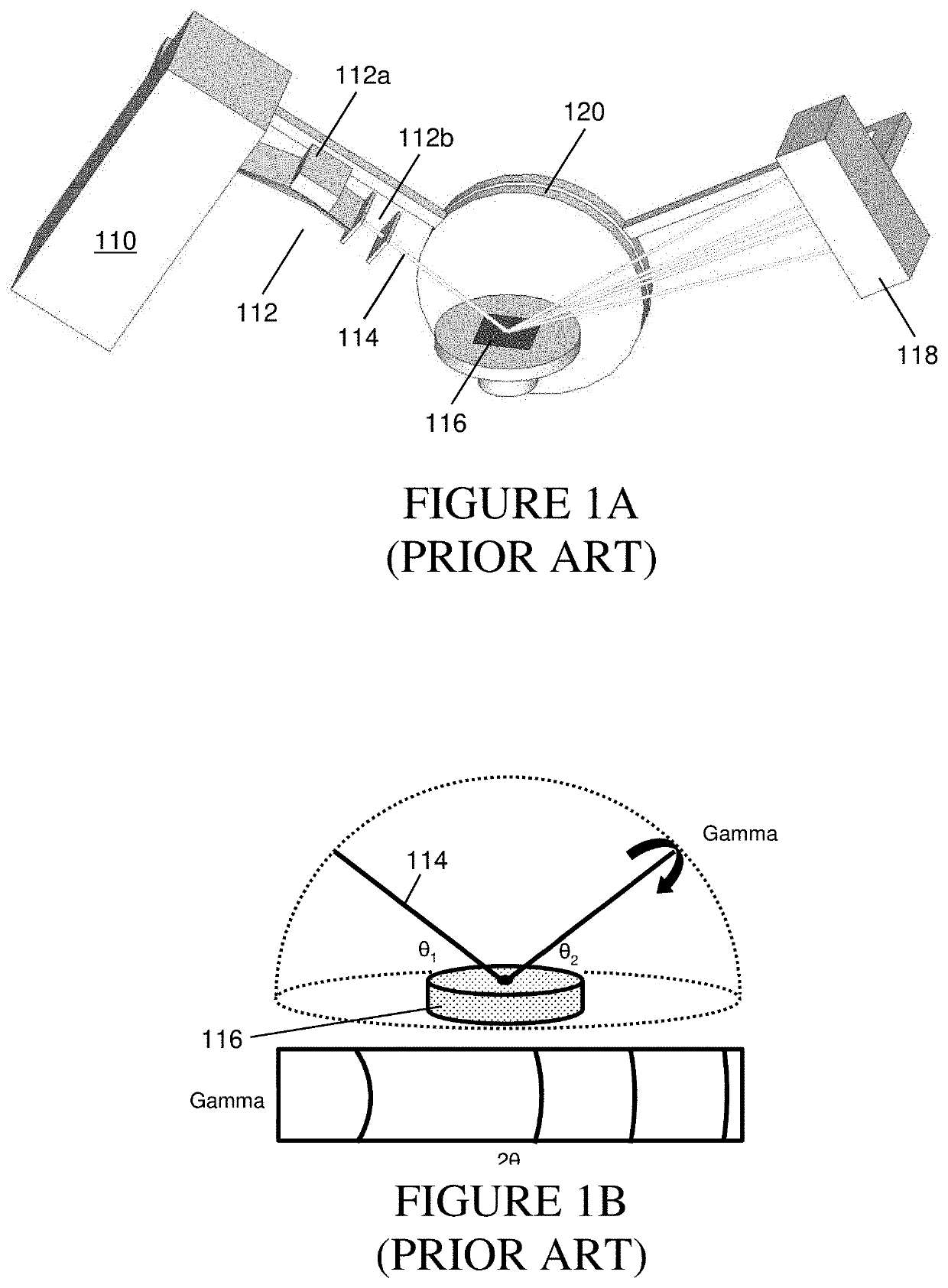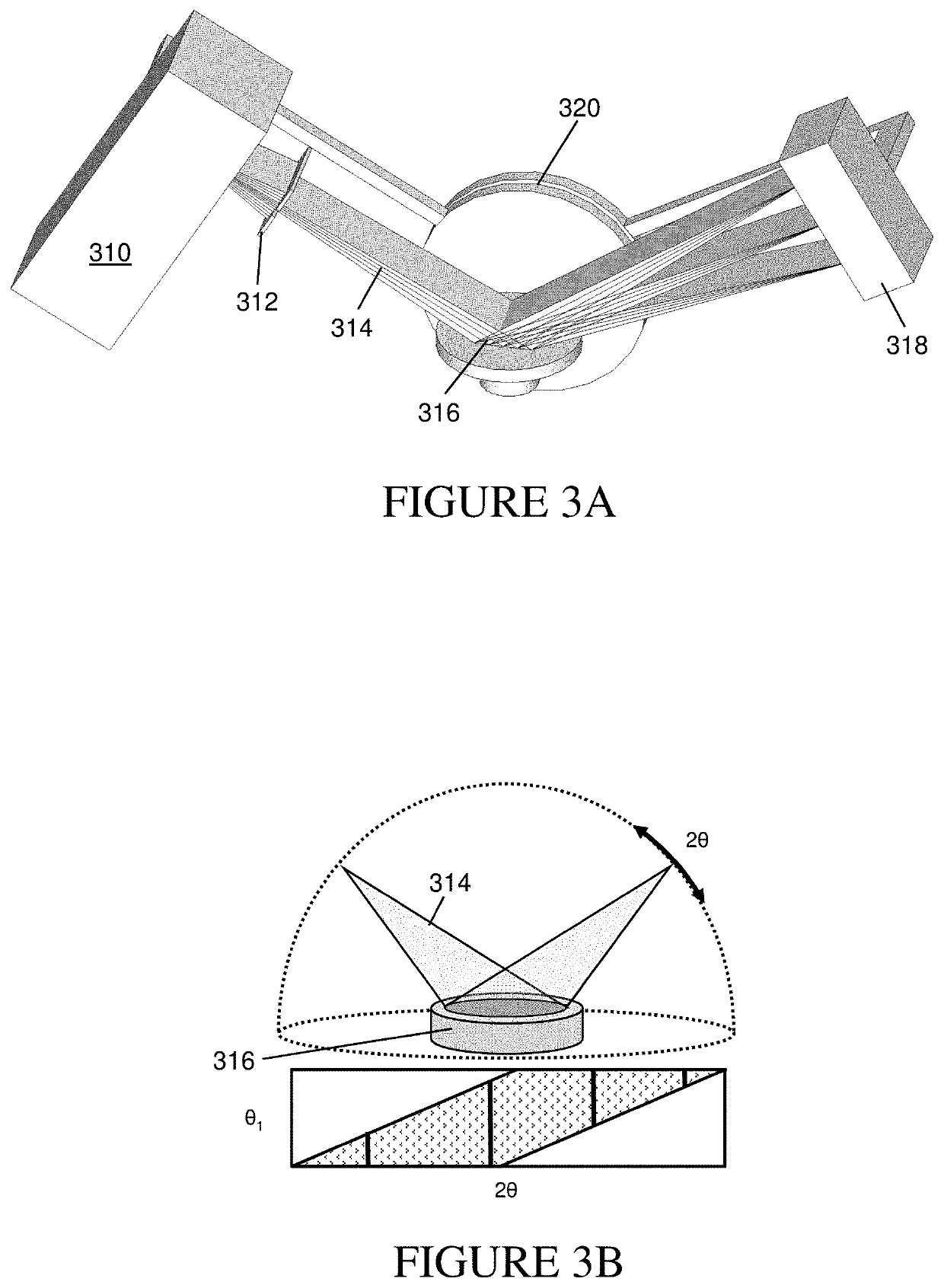Divergent beam two dimensional diffraction
- Summary
- Abstract
- Description
- Claims
- Application Information
AI Technical Summary
Benefits of technology
Problems solved by technology
Method used
Image
Examples
Embodiment Construction
[0025]FIG. 3A is a schematic representation of a two-dimensional X-ray diffraction method that uses an X-ray beam source 310 that produces a divergent X-ray source beam 314 that is incident on a sample material 316. The beam from source 310 first passes though an aperture 312 that limits the size of the beam. The aperture 312 may be of different configurations and, in an exemplary embodiment, uses one or more metallic surfaces that form a slit in a direction perpendicular to the beam direction so as to limit the size of the beam in the direction of divergence. The aperture 312 is precisely positioned relative to the source 310, and is moved with the source when the source is repositioned. This replaces the conditioning optics used in prior art systems, such as the optics 212 used with the parallel beam method of FIG. 2A, which typically include a very expensive X-ray mirror 212a, or the optics 112 of the side tilt method of FIG. 1A, which require a similar mirror 112a as well as a s...
PUM
 Login to View More
Login to View More Abstract
Description
Claims
Application Information
 Login to View More
Login to View More - R&D
- Intellectual Property
- Life Sciences
- Materials
- Tech Scout
- Unparalleled Data Quality
- Higher Quality Content
- 60% Fewer Hallucinations
Browse by: Latest US Patents, China's latest patents, Technical Efficacy Thesaurus, Application Domain, Technology Topic, Popular Technical Reports.
© 2025 PatSnap. All rights reserved.Legal|Privacy policy|Modern Slavery Act Transparency Statement|Sitemap|About US| Contact US: help@patsnap.com



